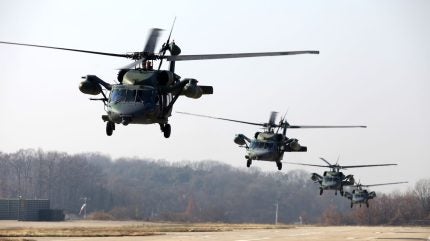
Korean Air has been chosen as the ‘preferred bidder’ for the modernisation of the Republic of Korea (RoK) Armed Forces’ UH-60 Black Hawk helicopters.
The Defense Acquisition Program Administration (DAPA) announced this selection, recognising Korean Air’s consortium with LIG Nex1 and Collins Aerospace. The project is valued at approximately Won961.3bn ($672.91m).
Negotiations with DAPA will focus on the technical aspects and conditions of the contract.
A Korean Air official said: “Based on our expertise and know-how in the UH-60, we will actively contribute to improving the military’s special operations capabilities and strengthening national defence.”
Upon finalisation, Korean Air aims to commence the performance improvements and anticipates delivering the upgraded helicopters to the military starting in 2029.
The Lockheed Martin (Sikorsky)-built UH-60P helicopter is used by the Air Force and Army, particularly for special operations.

US Tariffs are shifting - will you react or anticipate?
Don’t let policy changes catch you off guard. Stay proactive with real-time data and expert analysis.
By GlobalDataThis upgrade will encompass cockpit digitalisation, engine enhancements, survival and communication equipment upgrades, depot maintenance integration, and power support for a fleet of 36 UH-60s.
From 1991 to 1999, Korean Air was involved in the production of UH-60s, delivering more than 130 aircraft.
According to GlobalData’s report, South Korea’s defence spending is expected to grow at a compound annual growth rate (CAGR) of 3.7% between 2025 and 2029, reaching $54.7bn by the end of the period.
The acquisition budget is also set to rise significantly, increasing from $14.5bn in 2025 to $16.5bn by 2029.
Earlier this week, the South Korean Ministry of National Defence and DAPA celebrated the successful deployment of the country’s fourth military reconnaissance satellite.
Launched from Cape Canaveral Space Station in the US aboard a Falcon 9 rocket, the satellite reached its designated orbit approximately 15 minutes post-launch.



